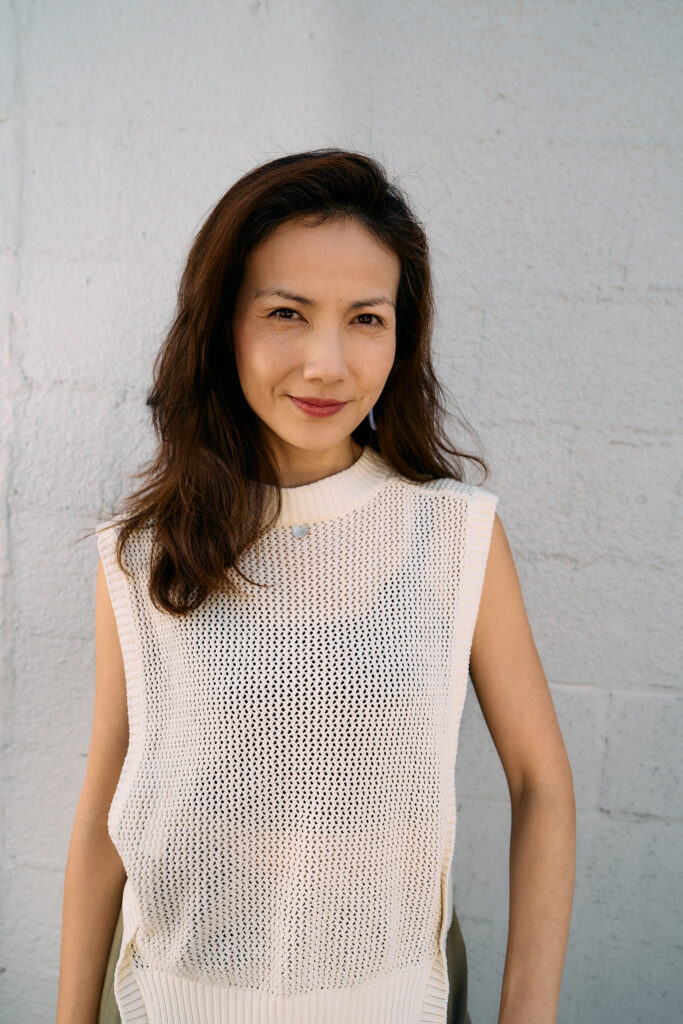Compassionate Group Therapy, Austin, Texas
Creative Arts & Music Therapy Groups in Austin
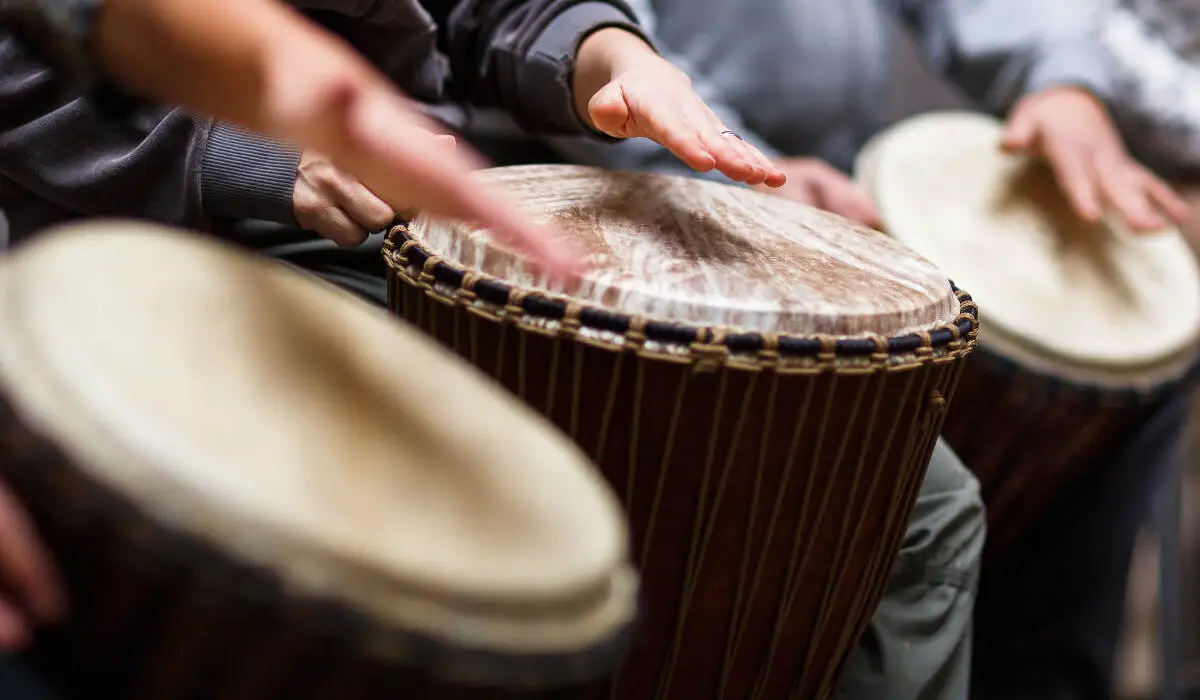
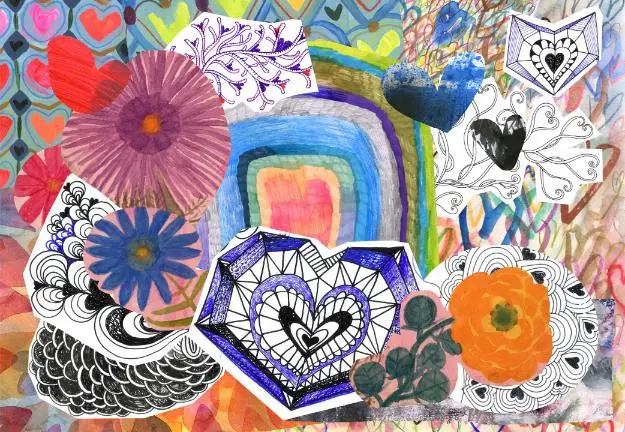


Supporting Connection, Creativity, and Growth
Group Therapy, Austin, Texas, helps people of all ages explore self-expression, build coping skills, and connect with others in a supportive, creative environment. Our sessions integrate music, art, and collaborative exercises to foster growth and healing in a safe and welcoming space.
Group Therapy, Austin, Texas, a Space for Healing
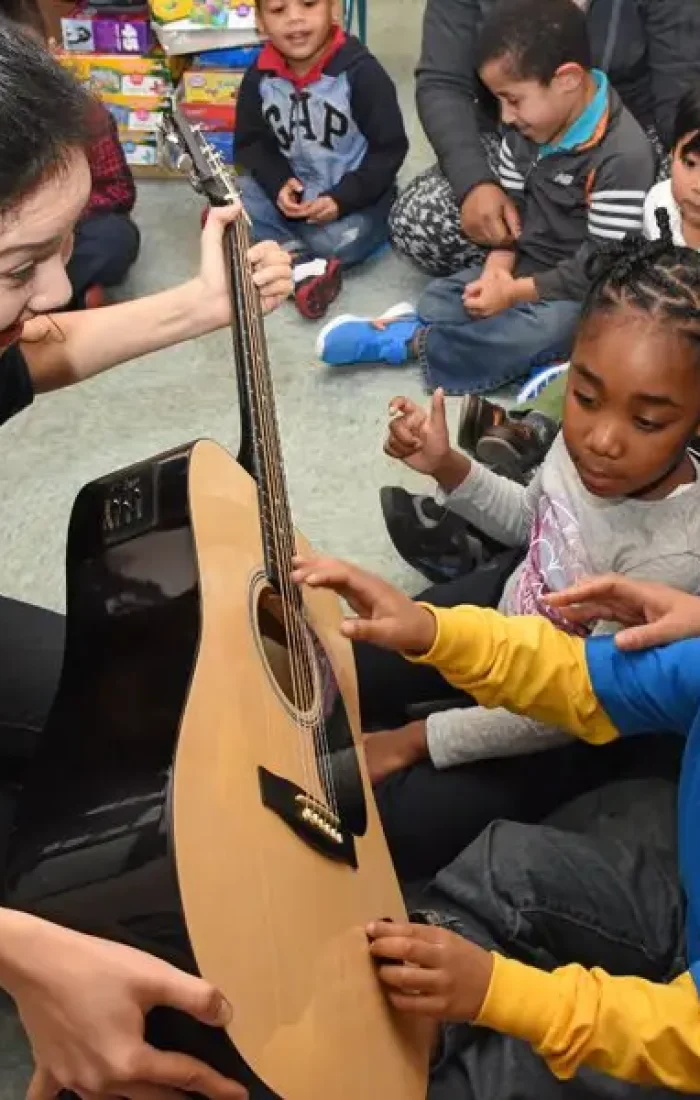
A Compassionate, Creative, and Trauma-Informed Approach
Inclusive Group Therapy, Austin, TX
At Integrative Creative Therapy, our group therapy Austin, TX programs are designed to provide a safe, supportive space. We offer in-person creative arts/music therapy groups in Austin, TX, for individuals looking to heal, connect, and grow within a supportive community.
Our sessions provide a safe space where participants can share experiences, develop coping skills, and explore self-expression through creative and therapeutic techniques.
We recognize that healing is not a one-size-fits-all process. That’s why we integrate trauma-informed, neurodivergent affirming creative arts and music therapy, ensuring that our groups accommodate different communication styles, sensory needs, and emotional processing methods.
Whether you are a child, teen, adult, or older adult, our group therapy, Austin sessions are designed to foster self-awareness, resilience, and emotional regulation. If you are searching for group therapy near me that encourages meaningful connection and personal growth, our specialized therapy groups provide a welcoming and affirming environment.
For the ones struggling in silence, feeling misunderstood ... Needing another path
The world feels too fast. Almost accelerated. Words don’t come easily, and simple things like communication or sensory activities seem hard. Neurodivergent children struggle to keep up in traditional settings where sitting still and verbal expression are expected.
Whether it’s children struggling with communication or teens battling anxiety and dreading another day of feeling different or misunderstood. As a parent, you may be watching your child struggle with transitions, relationships, grief, trauma, sensory sensitivities, or anxiety, and wondering how to help.
It’s hard when we as women carry stress and trauma with no outlet. The struggle is real, and so is your pain. Whether it’s seniors feeling alone and isolated or older adults with dementia watching memories slip away.
These challenges don’t go away on their own. They compound. Isolation deepens. But group therapy, Austin offers something different. Creative arts and music therapy meet people where they are, without forcing words or conformity.
Challenges Group Therapy Austin, Texas Participants Face
Common challenges include:
- Difficulty with emotional regulation and social connection in neurodivergent children.
- Overwhelming anxiety, depression, and feelings of isolation in teens.
- Unprocessed stress, trauma, and disconnection from the authentic self in women.
- Loneliness, loss of purpose, and cognitive decline in seniors.
- Memory loss, confusion, and heightened anxiety in older adults with dementia.
- Cultural isolation and language barriers for Mandarin-speaking adults seeking support.
The Benefits of Creative arts/music therapy groups
Group Therapy, Austin, Texas, offers unique advantages that individual therapy does not. Engaging in a group setting allows individuals to share their thoughts and feelings with others who have similar experiences, fostering connection, validation, and mutual support.
Here’s some of the benefits of our group therapy services
- A sense of belonging and shared understanding within a supportive community
- A safe space for emotional expression through discussion, music, and creative arts
- Opportunities to learn from others who are navigating similar challenges
- Strengthening communication and social skills in a structured environment
- Guidance from experienced therapists who facilitate meaningful discussions and activities
Our group therapy near me sessions in Austin, TX, foster confidence, connection, and meaningful growth while supporting participants on their healing journey.

A Compassionate Approach to Group Healing, Austin, TX
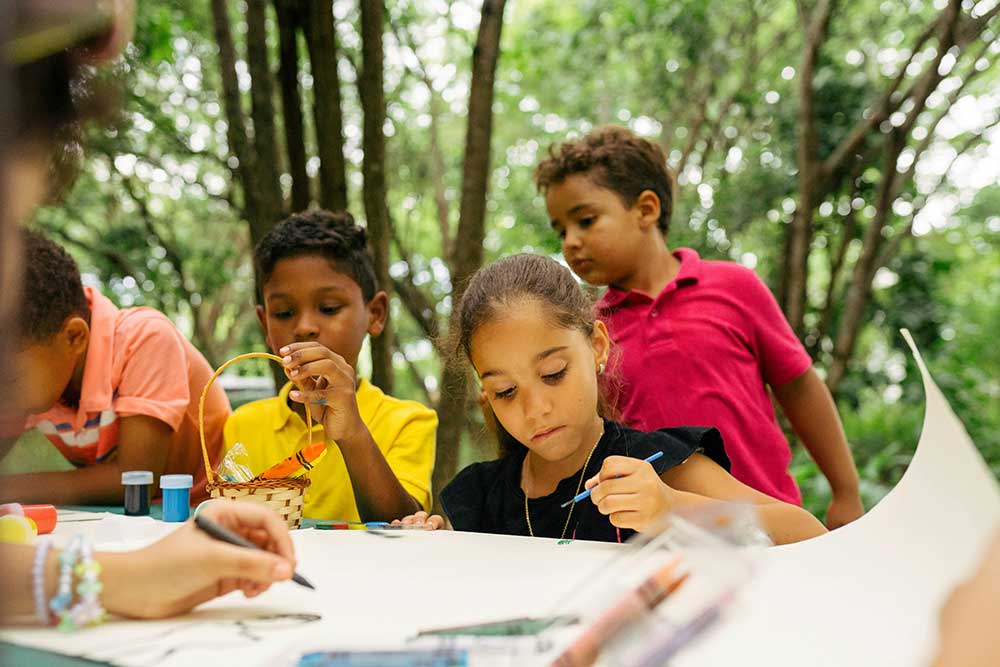

Can Creative Expression Help Young People Feel Understood?
The weight feels heavy. Anxiety builds. Social situations become overwhelming. Young people struggle to find words for what they’re feeling, and isolation sets in.
We understand how hard it is to watch children and teens navigate these challenges alone. Group therapy Austin was built to create safe spaces where young people can express emotions through music, art, and movement instead of just words.
Our Group therapy Austin, sessions help children and teens process feelings, build confidence, and connect with peers who understand. Participants throughout Austin, from Downtown to University Hill, discover healthy outlets for stress and develop emotional regulation skills that support daily life.
Group Therapy Austin for Children and Teens
What Happens When Stress and Trauma Go Unprocessed?
The pressure mounts. Stress compounds. Identity questions linger. Adults carry emotional weight while trying to function in daily life, and traditional talk therapy doesn’t always provide the tools needed.
We recognize how exhausting it is to manage these challenges without genuine support. Austin group therapy offers a different path. Creative arts and music therapy provide nonverbal outlets for processing trauma, exploring identity, and building authentic connections.
Adults throughout Austin, from Westcroft to Eastwood, find community in our trauma-informed sessions. Group therapy near me searches lead here because our approach fosters self-awareness, resilience, and meaningful healing through shared creative expression.
Austin Group Therapy for Adults Seeking Connection




How Can Music Support Aging With Dignity and Joy?
When Memory fades. Isolation inevitably grows. Anxiety about cognitive decline creates stress, and the first thing we do in this situation is detach ourselves. Older adults deserve spaces that honor their experiences while supporting mental and emotional well-being.
We understand the unique challenges seniors face. Austin group psychotherapy for older adults uses music and creative activities to stimulate memory, reduce anxiety, and strengthen social bonds in ways that feel joyful rather than clinical.
From singing groups to specialized dementia care, our group therapy Austin sessions create meaningful experiences. Seniors throughout Austin, from University Hill to surrounding areas, engage cognitively while building connections that combat loneliness.
Group Therapy Near Me for Seniors and Older Adults
Group Therapy, Austin, Creative Music Services We Offer at Integrative Creative Therapy
Our group therapy sessions incorporate creative arts, music therapy, and emotional regulation techniques to help participants engage in self-exploration and healing. Each group is designed to address specific needs, from anxiety management to self-empowerment.
Music Therapy Groups for Neurodivergent Children
Music Therapy Groups for Neurodivergent Children
A sensory-friendly environment where neurodivergent children can explore self-expression through music. This group supports emotional regulation, social skills, and confidence building.
- Thurs: 3:40 pm – 4:10 pm
Singing Group for Seniors
A music-based group for older adults looking to enhance social connection, cognitive engagement, and emotional well-being through singing and group interaction.
- Mon: 11:00 am – 11:50 am
Music Therapy Group for Older Adults with Dementia
A structured group designed to stimulate memory, reduce anxiety, and encourage connection through familiar songs, rhythm, and creative musical activities.
- Thurs: 11:00 am – 11:50 am
Creative Arts Music Therapy Group for Teens
A supportive group for teens navigating anxiety or depression—using art, music, and movement as safe spaces for self-expression, emotional release, and learning tools for stress relief and emotional balance.
- Thurs: 4:15 pm – 5:00 pm
Restorative Creative Arts Music Therapy Group for Women
A space to reconnect with your inner voice through music, art, and movement. Together we’ll release stress, process emotions, and rediscover strength and authenticity. No experience needed—just come as you are.
- Tues: 12:15 pm – 1:30 pm
Creative Arts Support Group for Mandarin Speaking Adults
This group offers a safe, nurturing space for Mandarin-speaking adults to connect, express, and heal through the arts. Together, we use music, art-making, writing, and gentle movement as ways to explore emotions, release stress, and build resilience.
- Thurs: 11:00 am – 12:00 pm
Each of our group therapy sessions is led by experienced therapists who create a structured yet flexible space for healing, growth, and self-discovery.
Trauma-Informed & Neurodivergent-Affirming Group Therapy, Austin
At Integrative Creative Therapy, we are committed to providing group therapy, Austin that is trauma-informed and neurodivergent-affirming. We recognize that everyone processes emotions differently, and we create a therapeutic space that is inclusive, accessible, and adaptable to individual needs.
Our trauma-informed approach includes:
- Creating a safe and nonjudgmental environment for emotional exploration
- Encouraging self-paced participation and respecting personal boundaries
- Providing grounding techniques and emotional regulation strategies
Our neurodivergent-affirming approach includes:
- Accommodating sensory needs by offering movement breaks, fidget tools, and flexible participation
- Using creative arts and music therapy as alternatives to traditional verbal communication
- Celebrating each individual’s unique way of processing emotions and interacting with the group
By incorporating these principles into our Austin group psychotherapy, we ensure that all participants feel supported, valued, and empowered throughout their healing journey.

Integrating Creative Arts & Music Therapy into Group Therapy, Austin
We believe that creative expression is a powerful tool for emotional processing and healing. That’s why we integrate trauma-informed, neurodivergent affirming creative arts and music therapy into our Austin group therapy sessions.
Our integrative approach includes:
- Music Therapy: Using rhythm, voice, instruments, songwriting, and music & imagery to encourage emotional expression, self-exploration, and reduce stress. Music therapy is particularly effective for individuals who struggle with verbal communication and emotional expression.
- Creative Arts Therapy: Incorporating art making, music making, dance, and movement to help participants process emotions and explore self-identity and self-expression in a supportive group setting.
- Somatic Therapy Techniques: Encouraging movement and breathwork to help participants release stored tension and build self-awareness.
- Mindfulness and Emotional Regulation: Using guided activities such as drumming, vocal toning, or body awareness exercises to promote relaxation and self-regulation.
By integrating these approaches into group therapy, Texas, we create a space where individuals can connect with themselves and others in a meaningful and healing way.
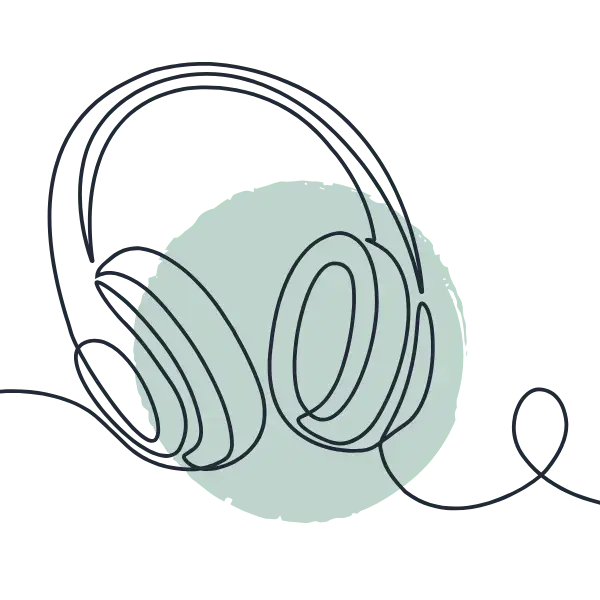
Austin Group Therapy and Counseling Specialists
Meet Our Board-Certified Group Therapists Providing Trauma-Informed Care
Our team combines decades of specialized training in group therapy in Austin, TX, and trauma-informed creative approaches to support emotional healing and connection.
Wen Chang: Licensed Creative Arts Therapist and Board Certified Music Therapist specializing in trauma-informed creative therapy and helping people connect to their authentic selves.
- 15+ years of experience
- EMDR Certified Therapist
- Board Certified Music Therapist (MT-BC)
- Licensed Creative Arts Therapist (NY)
- Bilingual services in Mandarin
- Somatic Experiencing training
- Internal Family Systems (IFS) training
- Cultural competency with Asian-Americans and immigrants
Gabriel Lit: Certified Music Therapist specializing in neurodivergent care, geriatrics, and traumatic brain injury support.
- MA, Music Therapy
- Board Certified Music Therapist (MT-BC)
- Neurodivergent-affirming care specialist
- Geriatrics and dementia care experience
- Traumatic Brain Injury rehabilitation
- Early intervention services


Creative Integrative Therapy Options in Austin, TX
Types of Therapy We Offer
We recognize that everyone’s path to well-being is different. That’s why we offer several therapy options for individuals and groups of all ages throughout Texas:
- Group Therapy: Ideal for anyone seeking shared experiences, peer support, and a sense of community during the healing process.
- Teen Therapy: Helps teenagers safely process the emotional ups and downs of adolescence through art, music, and movement.
- Child Therapy: Offers younger children an interactive and playful outlet where they can express feelings they might not have words for.
- Individual Therapy: Gives you a private space to explore experiences, patterns, and goals one-on-one with a dedicated therapist.
We use creative strategies like musical improvisation, drawing, and storytelling to unlock emotional insight. This multimodal approach is a gentle way to address difficult topics and cultivate hope.


Our Philosophy and Experience With Creative Healing Through Group Therapy
At Integrative Creative Therapy, we approach healing holistically, engaging mind, body, and creativity. Our sessions integrate creative arts therapy, music therapy for ADHD, Autism therapy, EMDR Therapy, IFS Therapy, and Teen therapy in Austin, TX, to help teens explore emotions safely and build resilience.
We support individuals interested in Group Therapy, Texas, who want to express themselves, better regulate emotions, strengthen peer relationships, and connect with their authentic selves. Our trauma-informed, neurodivergent-affirming methods ensure that everyone feels safe, seen, and empowered to grow.
Our Philosophy and Experience in Group Therapy, Austin, TX
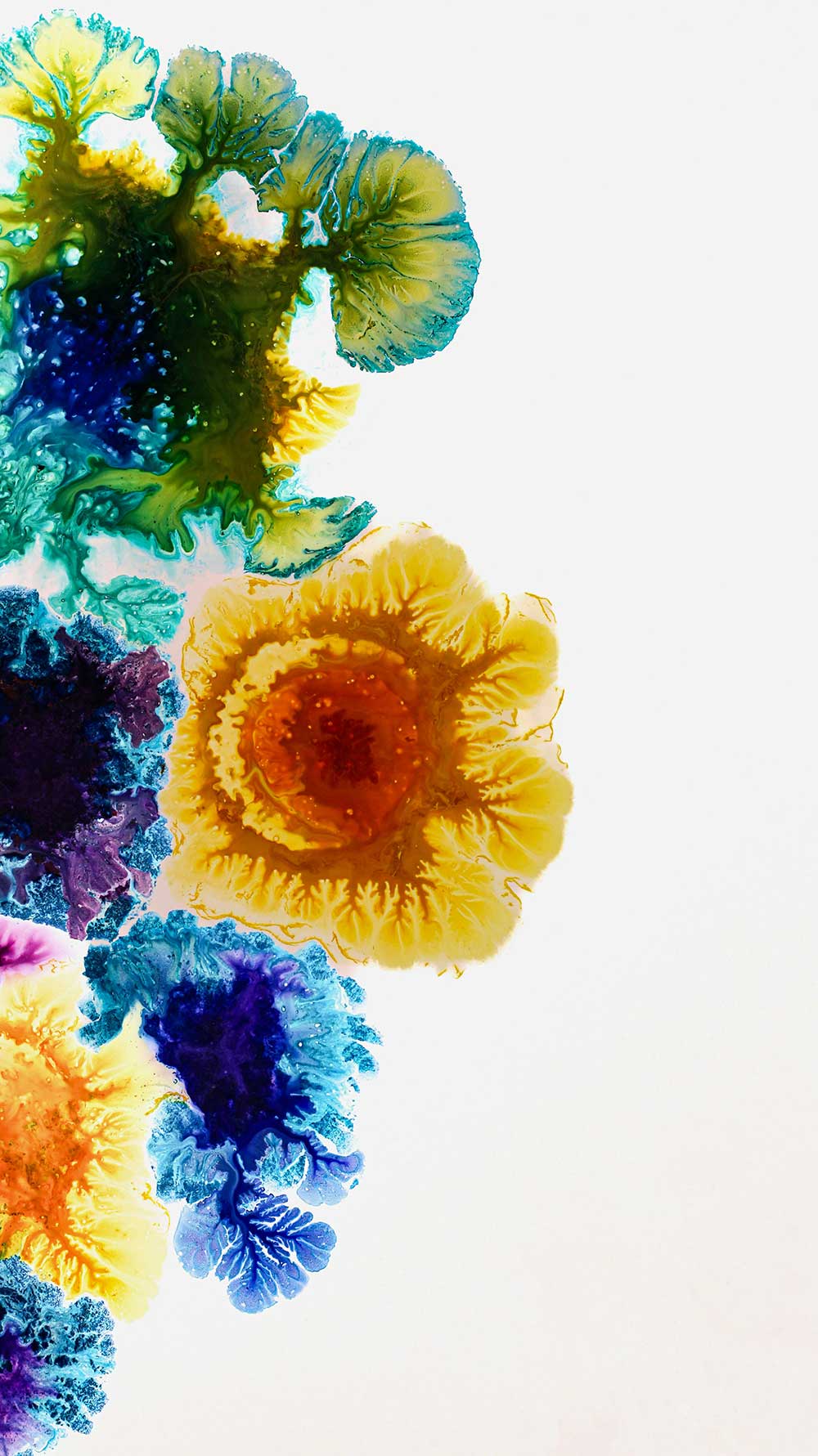

Group Therapy Austin Case Study
Real Life, Real Transformations
The Challenge
Marcus*, a teen from Austin, came to our group therapy sessions struggling with social anxiety, difficulty navigating peer relationships, and low confidence. Traditional talk therapy hadn't provided the tools or support needed to feel understood and connected within a group setting.
The Approach
Our team offered a trauma-informed group therapy program in Austin that combined creative arts therapy, music therapy, and peer-focused sessions. Each session encouraged self-expression, emotional regulation, and collaborative problem-solving through rhythm, art, and movement rather than forced conversation.
The Transformation
Over several weeks, Marcus began expressing emotions more openly and building stronger connections with peers who understood similar struggles. Creative activities provided a safe outlet for feelings that were difficult to verbalize. Confidence grew as Marcus navigated social interactions through music and creative expression.
The Outcome
Marcus now reports feeling more connected, understood, and confident in social settings. The trauma-informed, creative, and peer-focused approach empowered them with tools for ongoing emotional growth and social resilience. Music and creative expression require sophisticated social interactions, and our therapists had a tremendously positive impact as Marcus found their place.
If you are looking for group therapy near me that uses creative services and neurodivergent-affirming approaches throughout Austin, from Downtown to University Hill, we really cannot imagine a better resource.
For more success stories, see our Testimonials Page.
Join a Creative Arts/Music Therapy Group Session Today
At Integrative Creative Therapy, we believe in the power of community-based healing. Our group therapy, Austin, Texas, sessions offer a safe, creative, and supportive environment where individuals can explore their emotions, connect with others, and develop new coping strategies.
If you are looking for group therapy that is engaging, trauma-informed, and neurodivergent-affirming, we are here to help. Whether you are seeking support for yourself, your child, or a loved one, our therapy groups provide an opportunity to grow and heal in a shared space.
Contact Integrative Creative Therapy today at (737) 307-1853 to learn more about our group therapy offerings and find the right group for you, or check our FAQ for more information.
Contact Group Therapy Austin, TX Today
Group Therapy Throughout Austin, TX
Serving Austin Communities and Surrounding Areas
At Integrative Creative Therapy, our Group therapy through creative arts and music therapy serves people throughout central Texas. We’re conveniently located near downtown and welcome individuals and families from these Austin neighborhoods:
Primary Service Areas:
Local Landmarks We Serve:
We’re easily accessible from H-E-B Mueller, Alamo Drafthouse Cinema, Kerbey Lane Cafe, Torchy’s Tacos, Thinkery, Mueller Market District, Mueller Lake Park, John Gaines Park, Morris Williams Golf Course, and Bartholomew District Park.
Our central Austin location provides convenient access via Airport Blvd, Manor Rd, Berkman Dr, Simond Ave, and Aldrich St. We serve families attending community events like Mueller Farmers’ Market, outdoor movie nights at Mueller Lake Park, and seasonal festivals throughout the district.
Whether you’re looking for Group therapy Austin services, Group therapy near me, or creative arts therapy in your neighborhood, our team is here to support your healing journey with culturally attuned, trauma-informed care.
About Group Therapy Austin
Frequently Asked Questions
What happens in a group therapy session?
The room feels unfamiliar. Strangers sit in a circle. You’re wondering what happens next, whether you’ll be forced to share deeply personal struggles, or if group therapy, Austin, Texas, means sitting silently while others talk. The unknown creates anxiety before the first session even begins.
We understand that uncertainty about group therapy near me keeps people from starting. Walking into your first session takes courage. But knowing what to expect reduces that initial fear and helps you show up ready to engage.
Typical group therapy session structure:
Opening and check-in (5-10 minutes):
Sessions begin with brief greetings and emotional check-ins. Participants share how they’re feeling or what brought them to the group that day. This isn’t forced confession …it’s a gentle invitation to be present.
Some groups use creative opening rituals. Our creative arts music therapy groups might start with collaborative rhythm exercises, breathing together, or brief musical improvisation that grounds everyone in the present moment.
Main activity or discussion (30-40 minutes):
The core session varies by group type and therapeutic approach. Traditional talk therapy groups discuss specific topics or process members’ experiences. Creative groups engage in music-making, art creation, or movement activities that facilitate emotional expression.
Our group therapy Austin sessions use music and creative arts as primary tools rather than just talking. Participants might:
- Create visual art expressing current emotions
- Write and share songs about personal experiences
- Engage in group drumming or rhythm activities
- Move expressively to music
- Improvise musically together
Creative activities aren’t arbitrary. They serve specific therapeutic purposes—accessing emotions words can’t reach, building nonverbal connection, and practicing emotional regulation through rhythm and breath.
Processing and reflection (10-15 minutes):
After the main activities, the groups process what emerged. Participants share observations, insights, or feelings that arose. Therapists help connect creative experiences to daily life challenges.
This isn’t forced analysis. Some participants share extensively. Others simply listen and absorb. Both participation styles are valid.
Closing (5 minutes):
Sessions end with grounding activities and transition preparation. Groups might share one word describing their current state, practice a closing breathing exercise, or acknowledge each other’s presence.
What you’ll actually experience in Integrative Creative Therapy’s groups:
Music Therapy Groups for Neurodivergent Children (Thurs 3:40-4:10 pm):
Sensory-friendly environment with movement breaks and flexible participation. Children explore self-expression through instruments, rhythm games, and musical improvisation. No pressure to sit still or communicate verbally.
Singing Group for Seniors (Mon 11:00-11:50 am):
Social connection through familiar songs. Participants sing together, share song memories, and engage in gentle vocal exercises. Cognitive stimulation happens naturally through music recall.
Music Therapy Group for Older Adults with Dementia (Thurs 11:00-11:50 am):
Structured sessions using familiar songs to stimulate memory and reduce anxiety. Rhythm activities, singing, and musical reminiscence create joyful engagement.
Creative Arts Music Therapy Group for Teens (Thurs 4:15-5:00 pm):
Safe space for teens navigating anxiety or depression. Art-making, music creation, and movement provide outlets for stress and emotional processing. Peer connection reduces isolation.
Restorative Creative Arts Music Therapy Group for Women (Tues 12:15-1:30 pm):
Women reconnect with authentic selves through music, art, and movement. Sessions release stress, process emotions, and rediscover personal strength. No artistic experience required.
Creative Arts Support Group for Mandarin Speaking Adults (Thurs 11:00 am-12:00 pm):
Culturally affirming space for Mandarin-speaking adults. Music, art-making, writing, and gentle movement explore emotions and build resilience within a shared cultural context.
Common concerns about first sessions:
“Will I be forced to share personal information?”
No. You control what you share and when. Some participants share immediately. Others observe for weeks before speaking. Both approaches are respected.
“What if I’m not creative or musical?”
Creative therapy doesn’t require talent or experience. It’s about expression, not performance. Our Austin group psychotherapy approach welcomes all skill levels.
“Will everyone judge my struggles?”
Group members typically relate rather than judge. Shared vulnerability creates a connection. Most participants feel less alone after hearing others’ similar experiences.
“What if I cry or get emotional?”
Emotions are welcome. Groups provide safe spaces for feelings often suppressed elsewhere. Tears, laughter, and anger are all valid responses.
Group therapy rules that create safety:
Confidentiality:
What’s shared in the group stays in the group. This foundational rule allows vulnerable sharing.
Respect:
Participants listen without interrupting, avoid advice-giving unless requested, and honor diverse perspectives.
Voluntary participation:
You’re never forced to share, create, or engage beyond your comfort level.
Timeliness:
Arriving on time and attending regularly maintain group cohesion and trust.
Appropriate boundaries:
Outside relationships between group members are discouraged to maintain therapeutic focus.
What group therapy doesn’t include:
Group sessions aren’t:
- Individual therapy in a group setting
- Social gatherings or informal support groups
- One person monopolizes time while others sit passively
How our trauma-informed approach shapes sessions:
Our Austin therapy group recognizes that traditional group formats don’t work for everyone. Trauma survivors, neurodivergent individuals, and those with sensory sensitivities need adapted approaches.
We provide:
- Sensory accommodations
- Multiple participation options
- Pacing that respects energy and capacity
- Celebration of diverse processing styles
What happens between sessions:
Group therapy isn’t limited to session time. Between meetings, participants often:
- Practice creative coping strategies
- Notice emotions or patterns
- Feel increased connection
- Apply new skills
First session expectations:
Your first group therapy Austin, Texas session focuses on orientation and connection rather than deep processing. You’ll learn group norms, meet other members, and begin feeling the group’s energy. Discomfort is normal.
How experienced therapists facilitate sessions:
Our board-certified music therapists and licensed creative arts therapists:
- Create structured yet flexible containers
- Notice group dynamics
- Ensure balanced participation
- Adapt activities
- Hold space for complex emotions
Who benefits the most from group therapy?
You’re wondering if group therapy in Austin, Texas, fits your situation. Maybe individual therapy seems more appropriate, or you’re unsure whether group settings will help or overwhelm. Not everyone thrives in groups, but more people benefit than expect to.
We recognize that group therapy near me isn’t a universal solution. But research consistently shows that certain populations experience profound healing through group formats that individual therapy alone doesn’t provide.
Who benefits most from group therapy:
People feel isolated in their struggles:
The most powerful group therapy benefit is realizing you’re not alone. Isolation amplifies mental health challenges. Seeing others navigate similar difficulties normalizes your experience and reduces shame.
Teens battling anxiety, women processing trauma, and older adults facing cognitive decline—all benefit from peer connection that breaks isolation’s grip.
Those seeking peer perspective and feedback:
Sometimes, hearing from someone who truly understands your experience matters more than expert advice. Group members offer insights therapists can’t because they’ve lived similar struggles.
Our Austin group psychotherapy provides this peer wisdom alongside professional guidance. The combination creates powerful learning opportunities.
Individuals working on social skills and relationships:
Group settings naturally provide real-time relationship practice. You navigate interpersonal dynamics, communication challenges, boundary-setting, and conflict resolution in safe environments.
Neurodivergent children developing social skills, teens learning peer interaction, and adults strengthening communication—all benefit from this experiential learning.
People who’ve plateaued in individual therapy:
Sometimes one-on-one work reaches limits. Group therapy adds a new dimension that restarts progress. Different perspectives, peer accountability, and community support reignite momentum.
Those seeking cost-effective therapy options:
Group therapy typically costs less than individual sessions while providing substantial benefit. For people with limited resources, groups offer professional support that might otherwise be unaffordable.
Individuals dealing with specific shared experiences:
Groups organized around common experiences (grief, trauma, chronic illness, life transitions) provide a specialized understanding that general therapy doesn’t match.
Our Creative Arts Support Group for Mandarin-speaking adults creates a culturally specific space where shared language and cultural context deepen connection and understanding.
Specific populations thriving in Integrative Creative Therapy’s groups:
Neurodivergent children:
Traditional therapy often demands sitting still and verbal communication. Our Music Therapy Groups for Neurodivergent Children embrace movement, nonverbal expression, and sensory accommodation.
Children throughout University Hill and Downtown who struggle in conventional settings thrive when allowed to move, create sound, and express without words.
Teens with anxiety or depression:
Adolescence amplifies feelings of being different or broken. Group therapy shows teens that peers experience similar internal struggles despite appearing fine externally.
Our Creative Arts Music Therapy Group for Teens provides peer validation and creative coping tools. Participants realize they’re not alone in battling anxiety or depression.
Women seeking authentic connection:
Many women feel disconnected from themselves after years of caretaking, trauma, or suppressing needs. The group provides space to reconnect with the inner voice.
The Restorative Creative Arts Music Therapy Group for Women helps participants release stress, process emotions, and rediscover strength through shared creative expression.
Older adults combating isolation:
Aging often brings social isolation as peers pass away, mobility decreases, or retirement removes workplace connections. Group therapy rebuilds community.
Our Singing Group for Seniors creates joyful connections through music. Participants engage cognitively and emotionally while forming new friendships.
Adults with dementia and their caregivers:
Dementia increases anxiety and confusion. Music therapy groups use familiar songs to stimulate memory, reduce agitation, and create moments of clarity and joy.
The Music Therapy Group for Older Adults with Dementia throughout Eastwood and Westcroft provides structure that supports cognitive function and emotional well-being.
Culturally isolated individuals:
Navigating mental health in language and cultural contexts different from your upbringing creates additional barriers. Culturally specific groups provide an understanding that mainstream therapy misses.
Mandarin-speaking adults find validation and connection in groups honoring their cultural identity and communication preferences.
Who might not benefit from group therapy initially:
People in acute crisis:
Active suicidal ideation, severe psychosis, or acute trauma may need stabilization through individual therapy before group participation becomes helpful.
Those with severe social anxiety:
Some individuals need individual therapy to build tolerance for group settings before joining. Jumping directly into groups can overwhelm rather than help.
People with active substance use affecting participation:
Groups require enough stability to engage meaningfully. Active addiction often needs addressing before group therapy becomes effective.
Individuals needing intensive trauma processing:
Complex trauma sometimes requires extended individual work before group settings feel safe. Trauma survivors benefit from groups once foundational safety is established.
These aren’t permanent exclusions. Many people initially needing individual therapy eventually thrive in group therapy, Austin, Texas once ready.
How to know if group therapy fits you:
Ask yourself:
- Do I feel alone in my struggles?
- Would hearing others’ similar experiences help?
- Am I open to trying creative expression (music, art, movement)?
- Can I tolerate some discomfort while building a connection?
- Do I want peer support alongside professional guidance?
If you answered yes to most questions, group therapy near me likely offers significant benefit.
Combining individual and group therapy:
Many people benefit from both simultaneously. Individual therapy provides personalized attention for specific issues. Group therapy adds peer connection and community support.
Our Austin therapy group participants often work with individual therapists concurrently, creating comprehensive support addressing multiple needs.
Why creative group therapy specifically helps:
Traditional talk therapy groups require verbal fluency many people don’t possess. Trauma, neurodivergence, language barriers, or simply personality differences make talking difficult.
- Creative arts and music therapy groups provide alternative pathways:
- Nonverbal expression through rhythm, sound, and image
- Sensory engagement supporting emotional regulation
- Playful exploration reduces therapeutic intensity
- Shared creation building connection beyond words
Our group psychotherapy near me throughout Northside, Southside, and surrounding areas welcomes people who’ve struggled in traditional talk therapy formats.
What research shows about group therapy effectiveness:
Studies consistently demonstrate that group therapy produces outcomes comparable to individual therapy for many conditions—anxiety, depression, trauma, and relationship issues.
Some benefits are unique to groups:
- Interpersonal learning is unavailable in individual therapy
- Peer modeling of coping strategies
- Opportunity to help others (which aids personal healing)
- Cost-effectiveness allows longer treatment duration
- Real benefits participants report:
- Decreased isolation: “I thought I was the only one feeling this way.”
- New perspectives: “Hearing how others handled similar situations gave me options I hadn’t considered.”
- Accountability: “Knowing the group expects me to try new coping strategies motivates me to actually practice them.”
- Belonging: “I finally found people who understand without explanation.”
- Skill development: “Learning creative tools for managing emotions changed how I handle daily stress.”
Trust the process:
Most people feel uncertain about group therapy, Austin, Texas initially. Discomfort is normal. But participants who commit to several sessions typically report that groups become highlights of their week—safe spaces they protect and prioritize.
You don’t need to be the “right” personality type for groups. Our trauma-informed, neurodivergent-affirming approach creates space for introverts, extroverts, verbal processors, creative thinkers, and everyone between.
If you’re feeling isolated, stuck, or seeking connection alongside professional support, group therapy likely offers exactly what you need.
Can group therapy help with anxiety?
The racing thoughts won’t stop. Heart pounds. Breathing shallows. Anxiety consumes daily life. You’ve tried managing alone, maybe even tried individual therapy. You’re wondering if group therapy, Austin, Texas, could actually help or if sitting in a room with strangers will just trigger more anxiety.
We understand that group settings feel counterintuitive when anxiety already makes social situations overwhelming. But research and clinical experience consistently show that group therapy effectively treats anxiety—often more effectively than individual therapy alone.
Why group therapy works for anxiety:
Peer normalization reduces anxiety about anxiety:
Anxiety creates meta-anxiety. You worry about worrying. You feel anxious about feeling anxious. Shame and self-judgment compound the original anxiety.
Group therapy near me breaks this cycle. Seeing others experience similar physical symptoms, racing thoughts, and avoidance behaviors normalizes anxiety. You realize anxiety doesn’t mean you’re broken or weak—it means you’re human.
Exposure happens naturally in a supportive context:
Anxiety thrives on avoidance. The more situations you avoid, the scarier they become. But forcing exposure without support often backfires, increasing anxiety.
Group therapy provides graduated exposure in safe environments. Simply attending group challenges social anxiety. Sharing thoughts challenges performance anxiety. Creating art or music with others challenges perfectionism. Exposure happens organically within a supportive context.
Learning from others’ coping strategies:
Individual therapy offers a therapist’s expertise. Group therapy adds peer wisdom. Watching someone successfully use grounding techniques during anxious moments teaches more effectively than hearing about techniques abstractly.
Our Austin group psychotherapy participants share what works for them. You collect strategies from multiple sources rather than relying solely on professional recommendations.
Accountability and motivation increase:
Anxiety loves isolation. When anxious alone, avoidance feels easiest. But knowing your group expects you creates accountability. You practice coping skills between sessions because you’ll share progress with peers who understand.
Connection counteracts anxiety’s isolation:
Anxiety convinces you that something’s fundamentally wrong with you. Everyone else seems fine while you struggle. Isolation deepens anxiety.
Group connection directly challenges this distorted thinking. You witness others’ anxiety firsthand and realize the “everyone else is fine” narrative was false. Shared vulnerability creates belonging that anxiety can’t survive.
How creative arts groups specifically address anxiety:
Rhythm regulates the nervous system:
Drumming, clapping, or moving to steady beats synchronizes with heartbeat and breathing. This physiological synchronization activates the parasympathetic nervous system, reducing anxiety’s fight-or-flight activation.
Our Austin therapy group uses rhythm activities specifically for anxiety regulation. Participants learn to use breath and rhythm as portable anxiety management tools.
Creative expression externalizes internal experience:
Anxiety feels overwhelming when trapped inside. Creating visual art, making music, or moving expressively gives anxiety external form. Once externalized, anxiety becomes something you have rather than something you are.
Sensory engagement grounds in the present moment:
Anxiety lives in future-focused worry. Touching clay, feeling drumsticks, hearing voices harmonize—these sensory experiences anchor awareness in the present moment where anxiety loses power.
Nonverbal communication reduces performance anxiety:
Many anxious people struggle with verbal expression. Worrying about saying the “right” thing increases anxiety in talk therapy groups.
Creative groups offer communication through art, music, and movement. You express without needing perfect words. This reduces performance pressure while still facilitating connection.
What anxiety types respond well to group therapy:
Social anxiety:
Seems contradictory—treating fear of social situations in social settings. But graduated exposure in safe, structured groups effectively reduces social anxiety. Our group therapy in Austin, Texas, provides low-stakes social practice.
Participants throughout Downtown and University Hill report decreased social anxiety as group trust builds. Initial discomfort gives way to genuine connection.
Generalized anxiety disorder:
Chronic worry about multiple life areas responds well to peer support and shared coping strategies. Group normalizes anxious thinking patterns while providing tools for managing worry.
Panic disorder:
Learning that others experience panic attacks reduces the fear of panic. Groups teach grounding techniques practiced together. Some participants experience their first panic-free weeks after joining groups.
Performance anxiety:
Creative groups provide low-pressure performance opportunities. Sharing creative work with a supportive audience gradually reduces performance-related anxiety.
Health anxiety:
Hearing others navigate health concerns without catastrophizing models balanced thinking. Groups challenge health anxiety’s distorted risk assessment.
Specific ICT groups addressing anxiety:
Creative Arts Music Therapy Group for Teens (Thurs 4:15-5:00 pm):
Teens navigating anxiety find peer validation and creative coping tools. Art, music, and movement provide stress relief and emotional regulation practice. Participants learn that anxiety doesn’t define them.
Restorative Creative Arts Music Therapy Group for Women (Tues 12:15-1:30 pm):
Women carrying stress and anxiety reconnect with their authentic selves. Music, art, and movement release tension and process underlying emotions, fueling anxiety.
Creative Arts Support Group for Mandarin Speaking Adults (Thurs 11:00 am-12:00 pm):
Culturally specific anxiety (immigration stress, acculturation challenges, cultural identity struggles) finds validation in this group. Creative expression bridges language barriers when anxiety makes English communication harder.
How a trauma-informed approach supports anxious participants:
Our group therapy near me recognizes that anxiety often stems from nervous system dysregulation, trauma, or neurodivergence. Standard anxiety treatment sometimes increases anxiety by pushing too hard, too fast.
Our trauma-informed approach:
- Allows self-paced participation without pressure
- Provides sensory accommodations, reducing anxiety triggers
- Honors that anxiety serves a protective function
- Addresses underlying trauma fueling anxiety
- Celebrates small progress rather than demanding dramatic change
What to expect in the first sessions when anxious:
Anxiety about joining a group is normal. Most anxious participants report:
- High anxiety before the first session
- Relief that groups feel less intimidating than imagined
- Gradual comfort increase over the first few sessions
- Significant anxiety reduction after consistent attendance
Initial discomfort doesn’t mean group therapy won’t work. It means you’re challenging anxiety’s avoidance patterns—exactly what creates change.
Combining group therapy with other anxiety treatments:
Many anxious individuals benefit from multi-faceted approaches:
- Medication (when appropriate) plus group therapy
- Individual therapy plus group psychotherapy near me
- Lifestyle changes (sleep, exercise, caffeine reduction) plus creative groups
When group therapy alone isn’t enough for anxiety:
Severe anxiety sometimes needs individual therapy to establish safety before group participation. Panic disorder with agoraphobia might need graduated exposure before joining groups. Complex trauma underlying anxiety may require trauma-focused individual work.
Why creative approaches work when traditional therapy didn’t:
Many anxious people tried talk therapy without success. Discussing anxiety sometimes increases anxiety. Analyzing worry patterns can deepen rumination.
Creative therapy works differently. Making music, creating art, and moving to rhythm engage brain regions that talk therapy doesn’t access. Right-brain creative activity bypasses left-brain anxiety loops.
Our Austin group psychotherapy throughout Westcroft, Eastwood, and Northside welcomes people who’ve struggled in traditional formats. Creative approaches often succeed where talking failed.
Research supporting group therapy for anxiety:
Multiple studies demonstrate group therapy’s effectiveness for anxiety disorders. Cognitive-behavioral therapy groups show outcomes comparable to individual CBT. Creative and expressive therapy groups produce significant anxiety reduction.
Real results participants report:
- Physical symptom reduction
- Cognitive shifts
- Behavioral changes
- Emotional regulation
- Connection and belonging
Group therapy doesn’t eliminate anxiety. It teaches you to function well despite occasional anxiety. Symptoms decrease significantly. Anxiety stops controlling your life.
Is group therapy covered by insurance?
You want help, but worry about cost. Group therapy in Austin, Texas, sounds beneficial, but you’re uncertain whether insurance covers it or if you’ll pay out-of-pocket. Financial concerns often prevent people from seeking needed support.
We recognize that navigating insurance feels overwhelming, especially when already dealing with mental health challenges. Insurance coverage for group therapy varies significantly based on your specific plan, provider network, and the type of group therapy offered.
General insurance coverage for group therapy:
What most insurance plans cover:
Many insurance plans cover group therapy similarly to individual therapy. Mental health parity laws require most insurance companies to cover mental health services, including group therapy, at rates comparable to physical health services.
Group therapy near me is often covered when:
- Provided by licensed mental health professionals
- Deemed medically necessary for treating diagnosed conditions
- Delivered by in-network providers
- Pre-authorized when required by your plan
Common coverage structures:
Insurance typically reimburses group therapy at different rates than individual therapy. Group sessions often have lower copays or coinsurance percentages.
Factors affecting coverage:
Provider credentials and licensing:
Our therapists are licensed creative arts therapists and board-certified music therapists.
In-network versus out-of-network:
Coverage varies dramatically based on network status.
Diagnosis and medical necessity:
Insurance requires treatment of diagnosed mental health conditions.
Type of group therapy:
Psychotherapy groups are usually covered; wellness/support groups may not be.
Coverage for creative arts and music therapy:
Coverage depends on your specific insurance, state licensing, and whether creative arts therapy is recognized.
How to verify your coverage:
Ask your insurance:
- Does my plan cover group therapy?
- Copay/coinsurance?
- In-network or out-of-network?
- Pre-authorization?
- Session limits?
- Coverage for creative arts therapy?
Out-of-pocket costs when insurance doesn’t cover:
Group therapy typically costs less than individual therapy:
- Individual: $150–250+
- Group: $50–100
Alternative payment options:
- Sliding scale
- Payment plans
- HSA/FSA
- EAP programs
Advocating for coverage:
You can appeal denials, request medical necessity documentation, or switch plans during open enrollment.
Why cost shouldn’t prevent seeking help:
Untreated mental health costs more long term. Group therapy offers cost-effective treatment and support.
Integrative Creative Therapy and insurance:
We help clients understand their benefits and reimbursement options.
The bottom line on insurance coverage:
Many insurance plans cover group therapy near me. Coverage varies by plan. Verification is essential.
What are the rules of group therapy?
Walking into your first session feels uncertain. You’re wondering what’s expected, what’s allowed, what’s off-limits. The rules feel like a mystery, creating anxiety before you even begin.
We understand that knowing guidelines ahead of time reduces that first-session nervousness. Clear boundaries create the safety that makes vulnerability possible.
Core rules in most group therapy settings:
Confidentiality (the foundation):
What’s shared in the group stays in the group. This is non-negotiable. You don’t discuss other members’ stories, identities, or struggles outside sessions—not with friends, family, or social media.
Confidentiality allows honest sharing without fear of exposure. Breaking confidentiality destroys trust that took weeks to build.
Exceptions: Therapists must break confidentiality if someone poses a danger to themselves or others, or if abuse of vulnerable populations is disclosed. These exceptions are explained clearly in the first sessions.
Respect and non-judgment:
Listen without interrupting. Avoid giving unsolicited advice. Honor that each person’s experience is valid even when different from yours. No criticism, mockery, or dismissive comments.
Our group therapy, Austin, Texas, creates a space where neurodivergent processing, cultural differences, and varied communication styles are celebrated rather than corrected.
Regular attendance and punctuality:
Groups function through consistent participation. Members depend on each other’s presence. Frequent absences or chronic lateness disrupts group cohesion and therapeutic progress.
If you must miss, notify the therapist when possible. Commitment to showing up matters.
No outside relationships:
Group members typically avoid developing friendships or relationships outside therapy. This boundary maintains therapeutic focus and prevents complications.
Social media connections, dating, or business relationships between members often aren’t permitted. The group space stays separate from external life.
Active participation (at your pace):
You’re expected to engage, but engagement looks different for everyone. Some share verbally. Others express through creative work. Listening attentively counts as participation.
You won’t be forced to share before ready. But complete withdrawal for extended periods may prompt a therapist check-in about whether the group fits your needs.
Substance-free participation:
Attending a group under the influence of alcohol or drugs isn’t allowed. Clear presence is required for meaningful engagement and safety.
No violence or threats:
Physical aggression, threats, or intimidating behavior result in immediate removal. Group therapy near me must feel physically and emotionally safe for all participants.
Rules specific to creative therapy groups:
Respect for creative process:
In our Austin group psychotherapy, creative expression is honored without critique. You don’t judge others’ art, music, or movement as “good” or “bad.” Process matters more than product.
Care for materials and instruments:
Musical instruments and art supplies are shared resources. Handle them respectfully. Return items to their proper places. Report damage so repairs happen promptly.
Sensory needs accommodation:
Our trauma-informed approach allows fidget tools, movement breaks, and sensory accommodations. But accommodations can’t disrupt others’ participation. If your needs create challenges, therapists work with you on solutions.
Photography and recording:
Most groups prohibit photos, videos, or audio recordings. This protects privacy and confidentiality. Creative work produced in sessions typically stays in the therapy space or goes home with the creator only.
ICT’s specific group guidelines:
Music Therapy Groups for Neurodivergent Children (Thurs 3:40–4:10 pm):
Flexible participation honored. Movement welcomed. Nonverbal engagement is valid. Parents wait outside to give their children independent space.
Singing Group for Seniors (Mon 11:00–11:50 am):
Respectful listening during others’ sharing. Song choices accommodate memory and cognitive levels. Patience with processing time.
Music Therapy Group for Older Adults with Dementia (Thurs 11:00–11:50 am):
Repetition welcomed. Confusion normalized. Each moment is treated fresh without expectations based on previous weeks.
Creative Arts Music Therapy Group for Teens (Thurs 4:15–5:00 pm):
Phone use is minimized during sessions. Creative risk-taking encouraged. Peer support celebrated. Drama and conflict are addressed constructively.
Restorative Creative Arts Music Therapy Group for Women (Tues 12:15–1:30 pm):
Authentic expression over performance. Emotions are welcomed without fixing. Self-care and boundaries modeled.
Creative Arts Support Group for Mandarin Speaking Adults (Thurs 11:00 am–12:00 pm):
Mandarin and English are both welcome. Cultural context honored. Immigration and acculturation struggles are validated.
What happens if rules are broken:
Minor violations:
Therapists address gently. Lateness, brief side conversations, or boundary confusion get redirected in the moment or discussed privately.
Significant violations:
Confidentiality breaches, disrespect, or substance use trigger serious conversations. Repeated violations may result in removal from the group to protect other members.
Dangerous behavior:
Threats, violence, or severe disruption lead to immediate removal and safety planning.
Most rule violations stem from misunderstanding rather than malice. Therapists approach infractions as learning opportunities when possible.
Why rules matter for healing:
Structure creates safety. Knowing boundaries allows vulnerability. When you trust that confidentiality holds, that respect is required, and that the space remains consistent, you can risk authentic sharing.
Our Austin therapy group throughout Downtown, University Hill, Westcroft, and Eastwood maintains clear guidelines that help participants feel secure enough to engage in deep healing work.
Unspoken norms that develop:
Beyond formal rules, groups develop their own culture:
- Inside jokes and shared language
- Rituals around opening or closing sessions
- Ways of supporting members in distress
- Creative traditions unique to that group
These organic norms enhance belonging and deepen therapeutic work.
Questions about rules to ask therapists:
- How is confidentiality handled if I see another member outside the group?
- What should I do if I need to miss a session?
- Can I contact other members between sessions?
- How are conflicts between members addressed?
- What happens if someone consistently disrupts the group?
Balancing structure with flexibility:
Rules provide a framework, not rigidity. Our trauma-informed, neurodivergent-affirming approach recognizes that different nervous systems need different accommodations.
We maintain core safety rules while flexing on participation styles, sensory needs, and communication preferences. Structure serves healing rather than conformity.
Trust the container:
Clear rules create reliable containers for messy emotional work. You won’t worry about exposure, judgment, or chaos. Instead, you can focus on the vulnerability and growth that group therapy enables.
Participants throughout Eastwood, Northside, and surrounding areas report that clear boundaries paradoxically create freedom—freedom to be authentic, emotional, and real without fear.
How many people are in a group therapy session?
You’re picturing a crowded room. Too many people to connect with. Or maybe too few, creating pressure to constantly share. Group size affects comfort and effectiveness, but you’re unsure what to expect.
We recognize that group size significantly impacts your experience. Too large feels impersonal. Too small feels intense. The right size balances intimacy with diverse perspectives.
Typical group therapy sizes:
Standard therapeutic groups: 6–10 members
Research suggests this range optimizes therapeutic benefit. Enough people for diverse perspectives and peer learning. Small enough for everyone to participate meaningfully in each session.
Groups smaller than 5 lack diversity of experience and perspective. Groups larger than 12 make individual attention and deep connection difficult.
Specialized populations may vary:
Children’s groups often run smaller (4–6) for developability and attention span. Older adult groups might adjust based on cognitive needs. Teen groups balance between connection and overwhelm.
ICT’s group sizes:
Our group therapy in Austin, Texas maintains sizes supporting both individual attention and peer connection:
Music Therapy Groups for Neurodivergent Children (Thurs 3:40–4:10 pm):
Small groups (typically 4–6 children) accommodate sensory needs, allow flexible participation, and enable individualized support within a group context.
Singing Group for Seniors (Mon 11:00–11:50 am):
Moderate size (6–8 participants) creates a community feeling while ensuring everyone’s voice is heard literally and figuratively.
Music Therapy Group for Older Adults with Dementia (Thurs 11:00–11:50 am):
Smaller groups (4–6 participants) provide structure and repetition that support cognitive engagement without overwhelming.
Creative Arts Music Therapy Group for Teens (Thurs 4:15–5:00 pm):
6–8 teens create a peer community without the clique dynamics or overwhelm that larger groups might trigger.
Restorative Creative Arts Music Therapy Group for Women (Tues 12:15–1:30 pm):
6–10 women balance intimate sharing with diverse perspectives and experiences.
Creative Arts Support Group for Mandarin Speaking Adults (Thurs 11:00 am–12:00 pm):
Smaller groups honor cultural communication preferences and language needs while building community.
Why is group therapy so powerful?
You’ve heard that group therapy in Austin, Texas, changes lives. But sitting in circles talking doesn’t sound particularly powerful. You’re skeptical that group settings could accomplish what individual therapy hasn’t.
We understand that skepticism. Group therapy’s power isn’t immediately obvious. The mechanisms creating profound change operate subtly beneath surface interactions.
The unique healing factors in group therapy:
Research identifies specific therapeutic factors that only groups provide:
Universality (you’re not alone):
Isolation amplifies suffering. Anxiety, depression, trauma—all feel uniquely personal and shameful. Then you enter group therapy near me and discover others carry identical struggles.
This realization creates instant relief. Shame dissolves. You’re not broken or defective. You’re human experiencing human difficulties.
Individual therapy provides therapist reassurance. Group therapy provides lived proof through peers.
Instillation of hope:
Watching others improve creates hope for your own recovery.
Early-stage members gain hope from advanced members. Advanced members gain purpose from supporting newer members.
Altruism (helping heals):
Helping others helps you. Offering perspective to an anxious peer reduces your own anxiety.
Feeling useful combats depression and low self-worth.
Interpersonal learning:
You learn how you affect others and how others affect you. Real-time feedback teaches lessons that individual therapy can’t.
Group cohesion (belonging):
Humans are wired for belonging. Consistent groups develop powerful bonds that heal attachment wounds and combat isolation.
Corrective emotional experiences:
Groups recreate family dynamics and provide new outcomes guided by therapist support.
Why creative approaches amplify power:
Nonverbal connection:
Shared music, art, or movement creates connection beyond words.
Shared creation breeds community:
Collaborative artistic work creates a collective experience impossible in individual therapy.
Emotional regulation through rhythm and sound:
Group drumming and singing regulate nervous systems in ways that talking alone cannot.
Our group therapy in Austin, Texas, uses music and rhythm for nervous system regulation.
Play and joy counteract shame:
Creative work introduces play, reducing shame and perfectionism.
What participants say about group therapy’s power:
- “I finally stopped feeling crazy.”
- “I learned I could trust again.”
- “Watching others overcome gave me courage.”
- “Helping someone else helped me more than anything.”
- “The group knew when I was faking fine before I did.”
Why groups work when individual therapy didn’t:
Group therapy distributes healing across multiple relationships. Dynamics constantly shift, preventing stagnation.
The neuroscience behind group therapy’s power:
Mirror neurons activate:
Watching others express emotion activates your own processing.
Social engagement system regulation:
Safe social connection calms the nervous system.
Collective nervous system regulation:
Regulated members help co-regulate dysregulated members.
Power specific to ICT groups:
Sensory integration:
Music, visual art, and movement engage multiple sensory channels.
Cultural affirmation:
Groups for Mandarin-speaking adults validate cultural identity.
Neurodivergent celebration:
Groups affirm different processing styles.
Trauma processing without retraumatization:
Creative expression processes trauma through metaphor rather than recounting.
When group therapy feels most powerful:
- Breakthrough moments
- Collective grief or joy
- Unexpected connections
- Aha moments
Limitations and realistic expectations:
Group therapy will not fix everything instantly or replace necessary treatments. Power comes through commitment, vulnerability, and time.
The ripple effect:
Skills learned in group improve family relationships, communication, confidence, parenting, and work performance.
Why now matters:
Early intervention prevents years of unnecessary suffering. Groups starting soon throughout Northside, Southside, and the surrounding areas offer immediate access.
Group therapy is powerful because humans heal in connection with other humans.
Does group therapy really work?
You need evidence. Personal testimonials sound nice, but you want to know if group therapy in Austin, Texas, produces actual, measurable change. You’re tired of trying things that don’t work.
We understand that skepticism protects you from disappointment. You deserve honest information about what group therapy can and cannot accomplish.
What research definitively shows:
Decades of studies across thousands of participants demonstrate significant, lasting improvement for multiple mental health conditions.
Effectiveness for specific conditions:
Anxiety disorders:
Group CBT produces outcomes equivalent to individual CBT.
Depression:
Group therapy shows effectiveness comparable to or superior to individual therapy.
Trauma and PTSD:
Creative and expressive group therapy shows strong reductions without retraumatization.
Substance use disorders:
Group therapy is the gold standard due to accountability and peer support.
Social anxiety:
Group exposure produces better outcomes than individual therapy.
Eating disorders:
Group treatment shows particularly strong outcomes.
How group therapy compares to individual therapy:
Meta-analyses show group therapy produces equivalent results for most conditions.
Why group therapy works (evidence-based mechanisms):
Social support reduces symptoms
Peer modeling accelerates learning
Accountability increases behavior change
Normalization reduces shame
Multiple perspectives enhance insight
Evidence for creative arts and music therapy specifically:
Music therapy for mental health:
Effective for depression, anxiety, and trauma.
Benefits beyond talk therapy:
Neuroimaging shows creative work activates regions that talk therapy cannot.
Trauma processing:
Metaphor-based expression prevents retraumatization.
Neurodivergent populations:
Creative approaches show better engagement and outcomes.
Real-world effectiveness in our groups:
Quantitative improvements:
Reduced anxiety and depression scores
Improved sleep
Better performance
Greater social engagement
Qualitative changes:
Feeling less alone
Better emotional vocabulary
Improved communication
Greater sense of identity
More joy and connection
When group therapy doesn’t work:
Poor fit situations:
Active substance use
Severe symptoms needing stabilization
Wrong group type
Personality clash
Timing issues
What differentiates successful outcomes:
Successful participants attend consistently, participate, practice skills, and stay engaged for at least 8-12 sessions.
How long before group therapy works:
Weeks 1-4: Building trust
Weeks 5-8: Increased comfort and skill use
Weeks 9-16: Significant improvement
Months 4-6+: Sustained change
Factors increasing effectiveness:
- Therapist training
- Group composition
- Approach fit
- Concurrent supports
- Your investment
Evidence from ICT’s specific populations:
Strong outcomes for neurodivergent children, teens, women, older adults with dementia, and culturally isolated adults.
The bottom line on effectiveness:
Group therapy works but requires realistic expectations and active participation.
For more information:
If you’re seeking group psychotherapy near me throughout University Hill, Downtown, Westcroft, Eastwood, or surrounding areas, our trauma-informed, neurodivergent-affirming approach provides research-supported treatment delivered by experienced professionals.
Group therapy works. The question isn’t whether it works, but whether you’re ready to do the work that makes it work.


